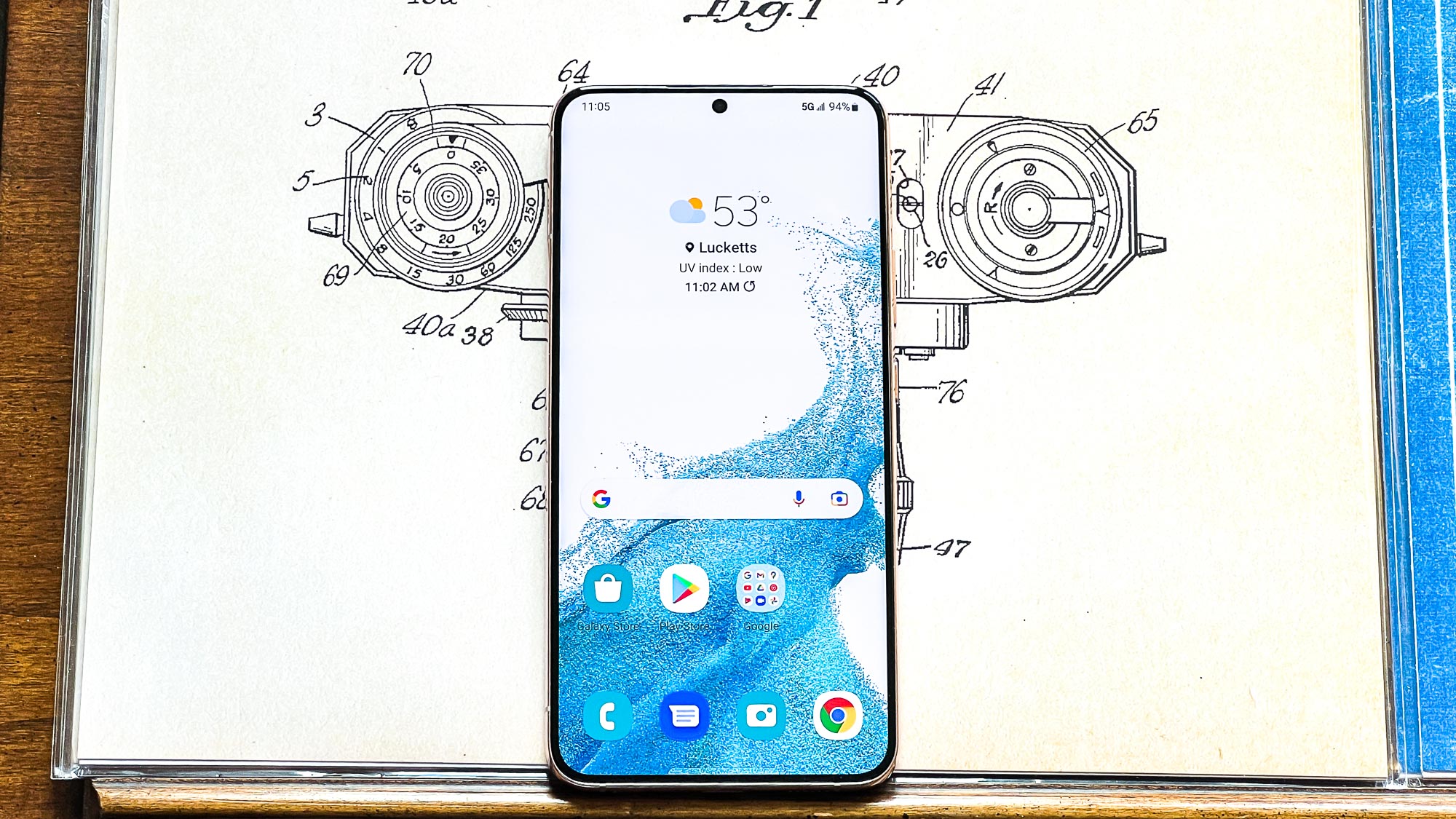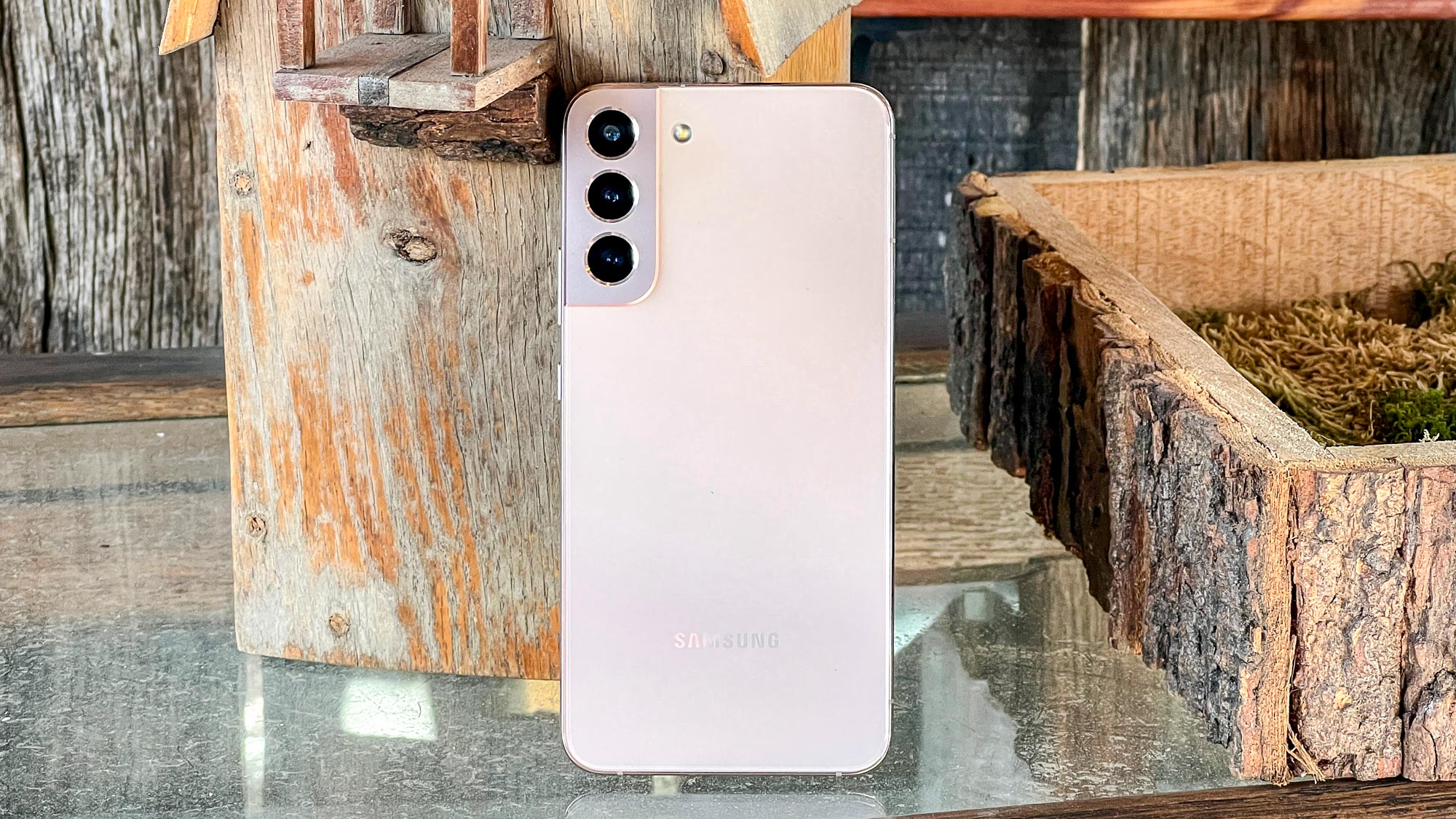Samsung Galaxy S22 Plus benchmarks — Snapdragon 8 Gen 1 vs Exynos 2200 results
Can an Exynos-powered Galaxy S22 Plus outperform the U.S. version and its Snapdragon 8 Gen 1 chipset?

We just wrapped up our Samsung Galaxy S22 Plus review, finding Samsung's new 6.6-inch device to be a solid update if not a big leap forward from the model it replaces. And just like its predecessor, there are actually two versions of the Galaxy S22 Plus. The ones in the US, South Korea, India and others use the Qualcomm Snapdragon 8 Gen 1 system-on-chip, while the UK/EU variants run on Samsung's own Exynos 2200 chip. In fact, this split happens with every Galaxy s22 model.
Normally, we wouldn't bat an eye at this considering how far behind Qualcomm silicon past Exynos chips have proven to be. But with the Exynos 2200, Samsung started over and then worked with AMD on the chipset's GPU. The result, on paper, sounded very exciting and I hoped we'd see Samsung break free of Qualcomm's monopoly on Android phone processors in the US.
Luckily, we got our hands on two Galaxy S22 Plus models — one with the Snapdragon 8 Gen 1 chipset and the other running an Exynos 2200. We put both through our usual suite of benchmarks to get an idea of how they perform. The Galaxy S22 is the first major phone in the US to use the Snapdragon 8 Gen 1, so it's the basis upon which we gauge the new chip's performance until we see more powerful gaming phones later this year. (For an overall look at the Snapdragon 8 Gen 1's performance, check out our Galaxy S22 Ultra benchmarks report.)
But you're here to see how the two chips powering Samsung's phones compare, so without further ado, let's take a look at our Snapdragon 8 Gen 1 vs. Exynos 2200 comparison using the Galaxy S22 Plus.
Snapdragon vs. Exynos benchmarks: Geekbench 5
To test our respective Galaxy S22 Plus models, we used the industry-standard Geekbench 5 for the CPU testing. I have included the iPhone 13 Pro and its A15 Bionic chip for reference so that you can see what the best phones Android has to offer compares to Apple's class-leading chip.
| Row 0 - Cell 0 | Snapdragon 8 Gen 1 | Exynos 2200 | A15 Bionic |
| Geekbench 5 single-core | 1,214 | 1,147 | 1,733 |
| Geekbench 5 multicore | 3,361 | 3,474 | 4,718 |
In terms of CPU performance, the Exynos 2200 performs more or less in line with the Snapdragon 8 Gen 1. The latter chipset wins single-core performance by a hair, and then the two chips switch places on multicore results in Geekbench 5. Just remember that Geekbench scores are practically meaningless out of context, unlike say a metric like frames per second (fps). They're only useful for seeing how various chips compare to each other.
Snapdragon vs. Exynos benchmarks: Graphics testing
Far more interesting is the disparity between the Snapdragon 8 Gen 1's Adreno GPU with the AMD RDNA2-based graphic processor on the Exynos 2200. Frankly, these aren't the results I was hoping for when I heard that Samsung and AMD had teamed up. The Exynos 2200 is supposed to be the first mobile chip to support ray tracing in games, but its raw performance in the graphics benchmarks certainly didn't live up to the hype.
Sign up to get the BEST of Tom's Guide direct to your inbox.
Get instant access to breaking news, the hottest reviews, great deals and helpful tips.
| Row 0 - Cell 0 | Snapdragon 8 Gen 1 | Exynos 2200 | A15 Bionic |
| 3DMark Wild Life Unlimited score | 10,027 | 6,950 | 11,693 |
| 3DMark Wild Life Unlimited FPS | 60 | 42 | 70 |
| 3DMark Wild Life Extreme Unlimited score | 2,449 | 1,718 | 2,766 |
| 3DMark Wild Life Extreme Unlimited FPS | 15 | 10 | 17 |
While the test scores are certainly interesting when compared, the frames per second (FPS) results are far more relevant. In both the Wild Life Unlimited and Wild Life Extreme Unlimited, the Exynos 2200 lagged behind the Snapdragon 8 Gen 1 by several frames, 18 FPS in the less stressful benchmark and 5 FPS in the much more challenging Extreme one. And for kicks and giggles, look at how far the Exynos lags behind the A15 Bionic, especially in the non-Extreme test (a significant 28 FPS delta).
Samsung Galaxy S22 Plus: Snapdragon vs. Exynos outlook
So what can we take away from these Galaxy S22 Plus benchmark results? The first lesson is that the some of us might have gotten a wee bit too excited about the Exynos 2200 in the build-up to the S22 release, specifically about the chipset's GPU. I admit I fell prey to the hype and hope — I want to see Qualcomm's grip on the US (and wider) market broken. Google and its Tensor chips don't sell in enough numbers to bother Qualcomm, so it seemed up to Samsung to present more of a challenge to the Snapdragon dominance.

Truth is, Qualcomm is pretty good at designing chips. It still hasn't managed to match Apple's mobile silicon, but it remains clearly ahead of Samsung's efforts. That said, the Exynos 2200 is a huge step above previous versions. The fact that it can go head-to-head with the Snapdragon 8 Gen 1 in computing power is very impressive. I guess it helps that Samsung isn't designing its own cores from the ground up with the 2200.
The Exynos 2200 is not a bad chip by any means. I see it almost like a first-gen product, something that Samsung and AMD can improve next year. Perhaps then we'll see something that can truly challenge Qualcomm, and perhaps it'll give Samsung enough confidence to ship more Galaxy S and Galaxy Z devices with its own chips in other markets.
What's more, any improvements to the Exynos line will also benefit the Google Tensor chips, since Samsung has at least some involvement in the design process for Google's system-on-chip.
The key thing here is that if you live in a market where the Galaxy S22 uses the Exynos 2200, you're still getting a good phone based on our testing. Most games don't stress the GPU as much as the 3DMark benchmarks do, so you'll still be able to play your very favorite games however you'd like.

Jordan is the Phones Editor for Tom's Guide, covering all things phone-related. He's written about phones for over six years and plans to continue for a long while to come. He loves nothing more than relaxing in his home with a book, game, or his latest personal writing project. Jordan likes finding new things to dive into, from books and games to new mechanical keyboard switches and fun keycap sets. Outside of work, you can find him poring over open-source software and his studies.
